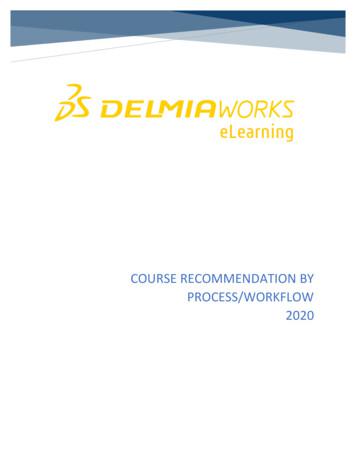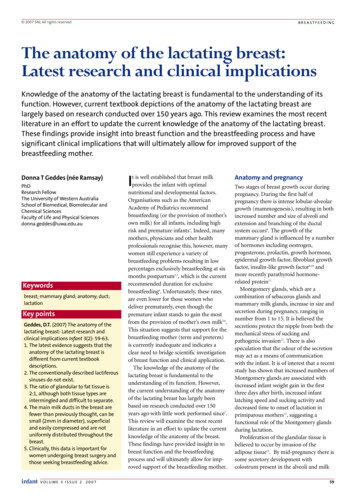Ambulatory - New External Referral Workflow - McLaren Health Care .
Ambulatory - New External Referral Workflow Thursday August 20th, 2020 External Referral Workflow Changes Effective August 26th, there will be a new process for processing External Referrals. An online module explaining this new process is available on PromisePoint by searching for course 6060. External referrals are referral orders placed to providers that are not using the OneMcLaren Cerner system. When a provider places orders an External Referral order, the referral order will generate two tasks to the Multi-Patient Task List: Referral Workup: The first task generated is a Referral Workup, which displays on the New Referrals tab. This task is used as notification that an external referral is needed. The task is completed when the appointment is scheduled. Referral Documentation/Results Received: The second task generated is a Referral Documentation/Results Received, which displays on the Pending Referral Notes tab. This task will remain on the task list for tracking, and is completed once the referral consult is received. Workflow Changes Overview Previous Steps: There was one tab on the Task List for referrals. Referrals One task generated when External Referral was ordered. Referral Documentation/Results Received The task had a Powerform attached, for staff to document appointment details. New Steps: There are two tabs on the Task List for referrals. New Referrals Pending Referral Notes Two tasks will generate when External Referral is ordered. Referral Workup Referral Documentation/Results Received No Powerform will be associated with the task. Instead, the External Referral order is modified, and appointment details are added to the order. Reason for Change: To help differentiate between referrals that need to be scheduled vs. referrals that are pending receipt of consult letter. Improve Task List response/performance. To help differentiate between referrals that need to be scheduled vs. referrals that are pending receipt of consult letter. To help create a more efficient way to ‘close the loop’ for referrals. After updating the order, the Order Details column on the task list will contain the appointment scheduling information. The Appt Date is the first data element in this column, allowing staff to sort to see which referrals are occurring next. This will help with efficiency in order tracking, since staff will not have to waste time looking at referrals with appointment dates that have not yet occurred.
New External Referral Steps Locate Referral Workup Task 1) Navigate to the Multi-Patient Task List. 2) Locate the Referral Workup task on the New Referrals tab. 3) View the details in the Order Details column (i.e. specialty, reason for referral, and name of provider/clinic patient is being referred to, if listed). These details will be used to gather the data needed to generate a Provider Letter and schedule the appointment. Note: There is no form associated with this task, the task is for tracking purposes only. Schedule Appointment 1) Call the receiving office to schedule the appointment. 2) If the patient is scheduling their own appointment, provide them with a copy of the referral requisition. Note: Refer to the “Referral Follow-Up” section for instructions on how to log details of patient outreach. Generate Provider Letter 1) From the Referral Workup task, right-click and choose Open Chart. 2) Generate the Provider Letter for the specialist by following the Provider Letter workflow and attaching any supporting documentation, such as office visit notes or results.
Modify Order & Complete Referral Workup Task A key component of the external referral tracking process is to Modify the External Referral order to include the necessary referral scheduling information, including the following data points: Referral Appointment Date Referring Provider Name Date Materials Sent Date Patient Informed of Appt Adding the appointment details to the referral order will assist staff with prioritizing the Referral Worklist. Reports can also be pulled that contain this information since it is logged on the order itself. 1) Navigate to the Orders tab and select the External Referral order. a. Right-click on the order and choose Modify. 2) In the Ordering Physician window: a. Select the Order radio button. b. Physician name: Enter the ordering providers name. c. Communication type: Select No Cosign Required. 3) Click OK.
Modify Order & Complete Referral Workup Task cont. 1) Complete the details for the referral appointment. Note: Entering these order details is an essential part of this workflow, particularly the Referral Appointment Date. 2) Click Orders for Signature and then click Sign. 3) Return to the Multi Patient Task List to complete the Referral Workup task. Click in the yellow box next to the task. 4) Click OK in the Chart Done window. Note: The Date/Time field can be adjusted if needed. 5) The Referral Workup task will now display as complete.
Close Referral Loop: Scan Consult/Complete Referral Documentation Task After the patient attends their appointment and the consult letter is received at the referring office, the consult letter will be scanned into the chart. The staff member who scans in the documentation will also complete the Referral Documentation/ Results Received task. This is to assure the referral loop is closed efficiently. 1) From the Multi Patient Task List, select the Pending Referral Notes tab. a. Click the column headings to sort the Referral Documentation/Results Received tasks. Note: Sorting the Order Details column to view the tasks by appointment date will allow staff to focus on completing tasks for appointments that have already occurred, therefore time will not be wasted on appointments with future dates. 2) Once the consult is scanned into the chart, mark the Referral Documentation/Results Received task on Pending Notes Received tab done by clicking in the yellow box next to the task. a. Click OK in Chart Done window. b. The task will now display as complete.
Following Up on Outstanding Referrals Scenario 1: Patient Outreach 1) If patient opted to schedule the appointment, document each attempt to contact them via an Admin Note on the Referral Workup task. a. Right-click on task and choose Create Admin Note. b. In the comments field, document your attempt to call the patient and include the date of call and name of staff member, then click OK. A paperclip icon will display next to the task indicating there are comments associated to this task. 2) Continue to document all patient outreach attempts on the existing Admin Note. This can be done by selecting the paperclip icon, then entering additional comments. Note: Do not delete the text from previous outreach attempts. Continue typing below the existing text. 3) If contact with the patient is successful: a. Take note of the patient’s appointment date and follow the External Referral workflow as described above. 4) If contact with the patient is unsuccessful: a. Create a new message in Message Center using the contents from the Admin Note. Send to the ordering provider as an FYI that the patient was not seen for the referral they ordered. The message will also be saved to the patient’s chart as documentation that multiple communication attempts were made. b. Complete both the Referral Workup and the Referral Documentation/Results Received tasks on the Multi Patient Task List.
Following Up on Outstanding Referrals cont. Scenario 2: Verifying Receipt of Consult Letter Continual monitoring of the Pending Referral Notes tab of the task list is critical to ensure closure of the referral loop. Sort the Order Details column by Appointment Date, and follow-up with the performing facility if the appointment date has passed but the consult letter has not been received. If needed, follow the steps below to doublecheck the chart to see if the consult letter has been scanned in. 1) Navigate to Documents or Notes tab (whichever is preferred). Note: Personal document filters can be created within the Documents tab, to allow filtering of documents by type, making it easier to locate specific documents. If interested in creating personal document filters, refer to the “User Customizations” guide or contact mmgcernertraining@mclaren.org for assistance. 2) Review documents to see if consult letter has been scanned in. 3) If consult letter is found, complete the Referral Documentation/Results Received task. 4) If consult letter is not found, follow up with the performing office. Note: Follow the steps outlined in Scenario 1 to create an Admin Note to document that contact was made. Referral Reporting Various reports can be run from Cerner to obtain a list of referrals being sent out from the clinic. Referral Tracking Report: This can be run from the Discern Reporting Portal. This report contains data such as the Ordering Provider, Order Date, Referred to Provider, Specialty, and Special Instructions. Outstanding Task Report: This can also be run from the Discern Reporting Portal. Unlike the Referral Tracking Report, this report shows pending tasks and can be filtered to show only referrals The Dynamic Worklist: This can be used to create a running list of outstanding referral orders for a clinic and/or provider.
External referrals are referral orders placed to providers that are not using the OneMcLaren Cerner system. When a provider places orders an External Referral order, the referral order will generate two tasks to the Multi-Patient Task List: Referral Workup: The first task generated is a Referral Workup, which displays on the New Referrals .
Figure 4: Create a Workflow in Nintex Workflow 2. Select the Library Ribbon, click on Workflow Settingsand then Create a Workflow in Nintex Workflow. This will open the Nintex Workflow Designer. To initiate the workflow, we will configure the workflow to add a menu item to the context menu in the workspace.
The Workflow Builder provides a graphical view of the workflow definition. The Workflow Builder screen is divided into the following frames (see Figure 1 as well), which can be resized: Workflow You can insert new steps into the workflow definition and process existing ones. Double-clicking on a step will display the associated step definition .
5. Create a Workflow Template 6. How to Set Workflow Template Options 7. Approve a PO with a Workflow Template Purchase Orders – Approve w/ Workflow In this lesson, you will learn how to create a PO workflow template, create and delete Team Members, and approving a PO with a workflow template. Topics inclu
If you reset the workflow or close the Workflow Designer, you lose all work. Clicking the Create a workflow entry in the Workbench Toolbox to restart the Workflow Designer activates a new workspace layout. You can only save your workflow de
Workflow template The business process flow is implemented as a workflow definition within a workflow template. You can find this workflow template in your R/3 System. Workflow Template AF_process (Process Notification of Absence) [Page 1
Workflow 2007 is Nintex's second- generation SharePoint workflow product. Nintex Workflow 2007 extends Microsoft SharePoint 2007 technologies including Microsoft Office SharePoint Server (MOSS) 2007 and Microsoft Windows SharePoint Services (WSS) 3.0. Nintex Workflow 2007 provides advanced workflow capabilities via a graphical web-
xii Oracle Workflow Developer's Guide Audience for This Guide Welcome to the Oracle Workflow Developer's Guide. This guide assumes you have a working knowledge of the following: The principles and customary practices of your business area. Oracle Workflow Oracle Workflow Developer's Guide. Workflow.
The anatomy of the lactating breast: Latest research and clinical implications Knowledge of the anatomy of the lactating breast is fundamental to the understanding of its function. However, current textbook depictions of the anatomy of the lactating breast are largely based on research conducted over 150 years ago. This review examines the most .























